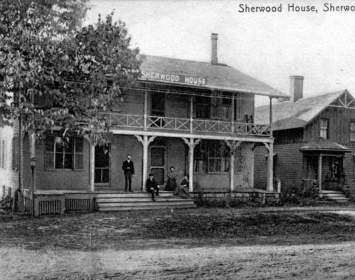Slocum Howland and the Howland Women Sites
Custom
0.3 Miles
This trail is entirely in Sherwood, a hamlet due east of Cayuga Lake. The Howland Stone Store operates as a museum with limited hours; check for hours before visiting. Other sites contain a historic structure or are unmarked. Still, because this trail is so compact, the visitor might as well see everything!
Radical Quaker Slocum Howland’s country store anchored a hamlet that became a hotbed of reform activism. His daughter Emily and granddaughter Isabel carried that reform tradition in new directions.
Slocum Howland was the patriarch of a Quaker family based in Sherwood, New York, that played key roles in reform movements including abolitionism and woman’s rights (nineteenth-century practice was to use the singular, woman's; later practice was to use the plural, women's). He was a very active conductor on the Underground Railroad, using his diverse resources (including a store, tenant houses, and a Cayuga Lake port facility) to help escaping slaves reach Canada or, if they preferred, make new homes in the area. In 1837, he built a store in Sherwood that became an important station on the Underground Railroad and the heart of a Quaker hamlet active in liberal social causes. (The store is now a small museum with a unique collection of abolition and suffrage artifacts.) Because of its importance the entire hamlet, known as the Sherwood Equal Rights Historic District, was placed on the National Register of Historic Places in 2008.
Slocum’s daughter Emily Howland (1827–1929) devoted her long life to abolition, temperance, and education—especially for escaped slaves and, after the Civil War, for African Americans generally. Though only an occasional campaigner for woman’s rights, she nonetheless achieved notable milestones for women, including becoming the first female director of an American national bank.
Before, during, and after the Civil War, she founded or financially supported some fifty schools for African Americans across the south.
In 1870, Emily returned to Sherwood because her father was in declining health. In 1872, she founded and partly financed a grammar school, the Sherwood Select School. Ten years later she assumed full control over the school as owner and consulting head, a position she would hold until her 100th year. In 1890, she became a director of the Aurora National Bank in Aurora, New York; she held this board seat until she died at the age of 101.
Emily Howland died in 1929. Her Sherwood home still stands on Route 34B, a few doors south of the landmark Howland Stone Store. The New York State Education Department placed a historical marker in front of the house in 1935.
Isabel Howland (1859–1942), granddaughter of Slocum Howland and niece to his daughter Emily, was a woman’s rights activist who worked closely with her longtime colleague and lover Harriet May Mills, Elizabeth Smith Miller, and others.
Isabel enjoyed a comfortable upbringing. She attended Cornell University from 1877 to 1881. One of her classmates was Harriet May Mills, the daughter of Syracuse abolitionist and freethinker C. D. B. Mills. Isabel and Harriet collaborated on numerous suffrage-related projects through the years.
Upon Isabel ’s return from Cornell, she assisted her mother in establishing Sherwood’s first library and museum. In 1891, the Sherwood Equal Rights Association was formed, a chapter of the national Equal Rights Association (founded 1866) that sought to combine suffrage activism on behalf of African Americans and women. Isabel was one of the founding members.
Isabel died in 1942, leaving a sizeable estate and a mansion called Opendore in Sherwood. For some years it housed local teachers; it was abandoned in 1976 and by 2007 had badly deteriorated. A restoration effort is now underway.









